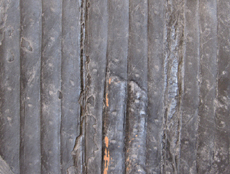
 |
 |
Science
Olympiad
| Division (Phylum) Lycopodiophyta | |
| The
lycopods or clubmosses (phylum Lycopodiophyta
lyco= wolf, pod=foot, phyt=plant or Lycophyta
"wolf plant") range from the Silurian to recent
times. Lycopods are not mosses. Clubmosses are more closely
related
to ferns
and conifers (Kenrick & Davis, 2004, p. 32). Lycopods
are vascular plants with true roots, stems, and leaves.
Lycopod
leaves are spirally arranged with spore capsules in the
axes of leaves or arranged into terminal cones. Today,
the 1500
species of small herbaceous clubmosses represent a small
fraction of modern flora, which possess an evolutionary
history rich in diversity and abundance extending back
420 million
years ago. The First Lycopods Baragwanathia longifolia from the late Silurian of Australia represents the earliest known lycopod. Baragwanthia was a low-growing, herbaceous plant with simple Y-shaped branching (Walker & Ward, 2002, p. 295). Stems had a dense covering of leaves resembling tiny bristles or hairs. The stems of many lycopod plants may remind one of wolf paws. These tiny bristles represent the earliest examples of leaves in the fossil record (Kenrick & Davis, 2004, p. 34). Lycopods split into two major groups. One group was herbaceous and has representatives in today's flora. The second group, the lepidodendrids, became woody and treelike by the Late Devonian. Lycopods reached their greatest diversity during the Carboniferous period and were among the dominant plants of the wet, humid coal-forming forests (Raven & Evert, 1981, p. 320). The arborescent lycopods that dominated the Carboniferous forests became extinct as dryer conditions spread during the Permian. Alternation of Generations Wet, humid environments are needed to complete the life cycles of both nonvascular plants and spore producing vascular plants. In the life cycle of plants a gametophyte (haploid) generation alternates with a sporophyte (diploid) generation. Seedless vascular plants such as lycopods, sphenopsids, and ferns possess structures that produce spores dispersed by wind. These spores are more drought-resistant than the non-vascular plants like mosses and liverwarts. The spores grow into small, inconspicuous gametophyte plants that possess one set of genetic instructions (haploid). Gametophyte plants have structures that produce sperm or eggs. Water is required for the sperm to swim to and fertilize eggs, forming zygotes. Zygotes with two sets of genetic instructions grow into the large sporophyte plants. The sporophyte plant will once again produce spores continuing the alternation of generations. Lycopod Forests Lycopods (Lycophyta) represented the dominant tree form during the Carboniferous. Lepidodendron was a lycopsid that could reach a height of 30 m and a width of 1m near its base. Lepidodendron leaves did not have a petiole and grew directly from the stem. Leaves were triangular in cross-section and arranged in regular spirals. The leaves of Lepidodendron are known as Lepidophyllum. The needle-like leaves were clustered around spore-bearing cones (Lepidostrobus) at the end of branches (Janssen, 1979, p. 36). When leaves were shed a diamond-shaped leaf scar was left behind (Willis, McElwain & Curtis, 2002, p. 102). The trunk was tapering and pole-like, studded with the diamond-shaped leaf scars, graced with a crown of bifurcating branches atop. In cross-section, the arborescent clubmoss trunk was composed of a small inner woody ring surrounding central pith. A soft layer of living primary bark and phelloderm tissue encased the woody inner ring. The exterior was covered with a hard lignified, non-water conducting, layer provided strength. The bark layer accounted for up to 98% of the trunks diameter, making the term "bark stem" appropriate for these trees (Selmeier, 1996, p. 139). Trunks of this type are prone to buckling at branching points. Branches are constructed at small angles. Overall, branching is sparse in the tree design (Kenrick & Davis, 2004, p. 70). At the base of the trunk four or more radiating "arms", extensively branched, spread into the substrate in a shallow manner. The branching axes are referred to as Stigmaria and had spirally arranged lateral appendages or roots. When these appendages were shed a circular scar was left behind. Sigillaria was similar to Lepidodendron, but exhibits a different leaf scar pattern on its bark, did not tend to branch, and bore cones at the end of stems erupting from the trunk (Janssen, 1979, p. 54). Both lycopsids were fast growing and had trunks with soft inner tissues surrounded by a protective layer of bark. These trees probably had photosynthetic tissue in the bark, stems, and leaves. Multiple Names for One Organism Parts of the Lepidodendron tree were discovered and named before their relationships were fully understood. The diamond-studded stem is named Lepidodendron, the roots Stigmaria, the leaves Lepidophyllum, and the reproductive structures Lepidostrobus (Janssen, 1979, pp, 35-68). Science Olympiad Fossil Event The 2016 Science Olympiad Fossil List includes the genus Lepidodendron (scale tree) within the phylum Lycopodiophyta. |
|
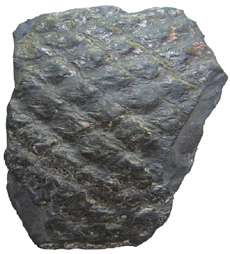 Lycopod Bark Lepidodendron sp. 6 cm x 5 cm |
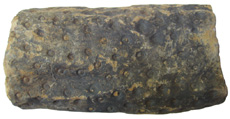 Lepidodendron Root Structure Stigmaria 17.5 cm x 9 cm |
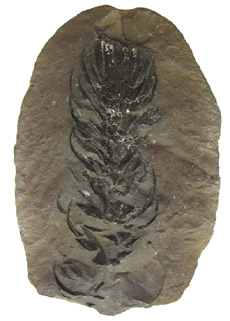 Lepidodendron Cone Lepidostrobus sp. Black & White Mine, Gadbury Brick Works, Atherton, near Wigan, Lancashire, UK Westphalian B (Duckmantian); Upper Carboniferous 5.5 cm x 3.5 cm |
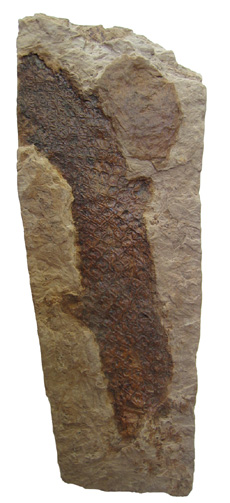 Lycopod Branch Lepidodendron Pella, Iowa Cherokee Formation Paleozoic; Pennsylvanian Plate is 19 cm x 7 cm |
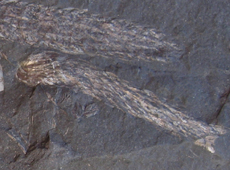 Lepidostrobus sp. Upper Carboniferous, Westfalien Piesberg/Osnabruck, Germany Smaller Cone 4.5 cm in length |
|
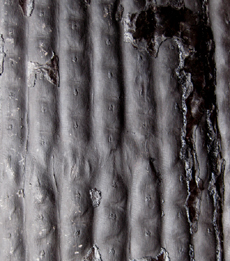 Sigillaria mamillaris Upper Carboniferous; Westfalien Lieg, Luik, Belgium 6 cm x 8 cm shown |
|
Bibliography |
|
| Janssen,
R.E. (1979). Leaves and Stems from Fossil Forests:
A Handbook of the Paleobotanical Collections in the
Illinois State Museum. Springfield, Illinois:
Illinois State Museum. Kenrick, P. and Davis, P. (2004). Fossil Plants. Smithsonian Books: Washington. Raven, P.H., Evert, R.F., & Curtis, H. (1981). Biology of Plants [3rd Ed]. New York: Worth Publishers, Inc. Selmeier, A. (1996). Identification of Petrified Wood Made Easy. In Dernbach, U. Petrified Forest: The World's 31 Most Beautiful Petrified Forests (pp. 136-147). Germany: D’ORO Publishers. Walker, C. & Ward, D. (2002). Smithsonian Handbooks: Fossils. New York: Dorling Kindersley Willis, K.J. & McElwain, J.C. (2002). The Evolution of Plants. New York: Oxford University Press. |
|











